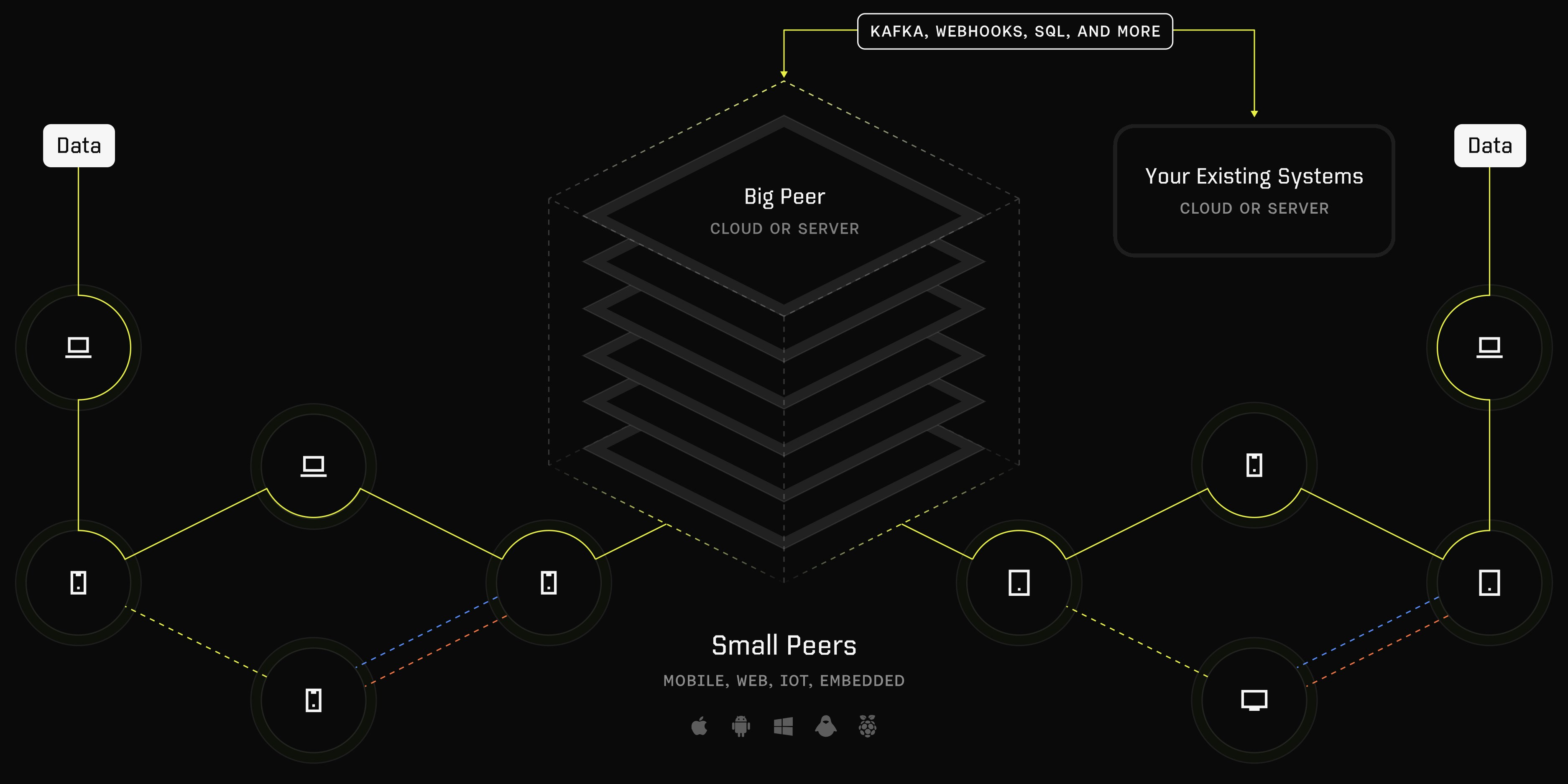Overview

Small Peer (Ditto SDK)
An embedded database that runs on mobile or edge devices to power applications that use the Ditto SDK.As well as providing a local database, the Small Peer also has built-in mesh connectivity to other Ditto-enabled devices (peers), enabling apps to synchronize data without relying on a central server or constant cloud connectivity.
Ditto Server
A cluster of servers that can run on-premises or in the cloud, that augments the SDK’s local-first capabilities with cloud-based synchronization, identity management, monitoring and data integration features.While synchronization does not rely on Ditto Server, it removes all of the complexity of:
• Integrating a P2P system like Ditto with your wider data ecosystem (e.g. Analytics, MongoDB, Object Storage, etc.)
• Providing a synchronization fallback for physically dispersed devices
• Monitoring and managing your fleet of Small Peers
• Integrating a P2P system like Ditto with your wider data ecosystem (e.g. Analytics, MongoDB, Object Storage, etc.)
• Providing a synchronization fallback for physically dispersed devices
• Monitoring and managing your fleet of Small Peers